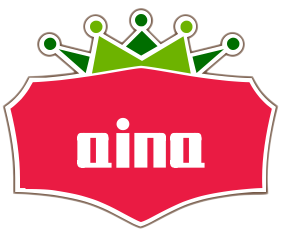The N1 blockchain (formerly known as Layer N) is a next-generation, high-performance Layer 1 blockchain designed to enable new types of decentralized applications (dApps) that were previously not possible due to scalability constraints.
It originated as a Layer 2 solution on Ethereum and reached a milestone of 100,000 transactions per second (TPS) on its testnet but has since transitioned to a full-stack Layer 1 blockchain with its own infrastructure.
This shift allows N1 to offer transaction speeds 10 to 100 times that of many existing blockchains, targeting over 100,000 TPS for highly scalable and computationally intensive blockchain applications.
How N1 blockchain Works?
-
Architecture: N1 employs a hyper-focused, application-centric design that enables developers to run any code or deploy dApps on-chain with minimal effort—just “two clicks.”
-
Developer Friendly: It is the first blockchain to support TypeScript natively for smart contract/app development, with plans to support Solidity, Rust, and C, significantly lowering the barrier for developers.
-
Multi-language Support: This multi-language capability aims to simplify the deployment of sophisticated decentralized applications.
-
Native Tools: N1 features a ‘hub’ wallet for managing assets across multiple dApps, a wallet widget for seamless cross-application login, and a streamlined deployment interface inspired by modern developer tools.
-
Computational Power: The blockchain is designed to handle computational complexity that many other blockchains cannot, enabling new applications like perpetual decentralized exchanges (DEXs), social finance (SocialFi) apps, and even on-chain AI simulations inspired by complex scenarios such as Westworld.
How does N1 blockchain achieve 100,000 TPS and what makes it unique?
The N1 blockchain achieves its remarkable transaction speed of over 100,000 transactions per second (TPS) primarily through a combination of architectural innovations and a shift from being an Ethereum Layer 2 (L2) solution to a full-stack Layer 1 (L1) blockchain.
How N1 blockchain Achieves 100,000 TPS
-
Full-Stack Layer 1 Infrastructure:
N1 started as an L2 on Ethereum and reached 100,000 TPS on its testnet. However, Ethereum’s settlement layer was a bottleneck limiting scalability. To overcome this, N1 replaced Ethereum’s settlement layer with its own proprietary full-stack Layer 1 infrastructure. This architectural change eliminates Ethereum’s constraints, enabling much higher throughput independent of Ethereum’s limitations. -
High-Performance Execution Layer:
N1 retains the same high-performance execution layer it developed as an L2 but now pairs it with its custom L1 settlement layer. This enables it to maintain and surpass its previous performance level, scaling transaction speeds by 10 to 100 times that of many existing blockchains. -
Scalability by Validator Participation:
The network is designed to scale as more validators join, which helps sustain high throughput without degradation of speed or efficiency.
What Makes N1 blockchain Unique
-
Developer-Friendly Multi-Language Support:
N1 supports multiple popular programming languages such as TypeScript, Solidity, Rust, and C natively, simplifying dApp development and opening blockchain programming to a broader developer base, including Web2 developers. -
Designed for High-Compute Applications:
N1 targets new classes of decentralized applications previously impractical on other blockchains due to computational limitations, such as advanced decentralized exchanges, SocialFi applications, and complex on-chain AI simulations inspired by scenarios like Westworld. -
Backed by Experienced Team and Major Investors:
The team behind N1 has experience building high-performance blockchain projects (including a high-volume on-chain order book on Solana) and has secured significant investment from reputable firms like Founders Fund, Kraken, Multicoin, Amber Group, and GSR. -
Aim for Next-Gen Blockchain Apps:
N1’s goal is to enable “hyperfast” transactions and computational complexity suitable for the next generation of blockchain applications, emphasizing scalability and developer experience to unlock new use cases not feasible on existing platforms
N1 blockchain Airdrop Details, Participation, and Maximizing Airdrop Potential
As of now, there is no explicit, verified public information or official announcement about an N1 blockchain airdrop regarding distribution details or participation steps.
Projects like N1 often announce airdrops through their official channels (websites, social media, or partner platforms) once ecosystem milestones or token launches are ready.
If an airdrop occurs, typical participation steps might include:
-
Creating and holding assets in a compatible wallet that supports N1 tokens.
-
Engaging with the N1 ecosystem—such as interacting with dApps, staking, or participating in governance.
-
Signing up or completing identity/eligibility verification on official N1 channels.
To maximize airdrop potential, general strategies include:
-
Early and active participation in testnets or mainnet dApps.
-
Being part of community channels and announcements to get timely airdrop alerts.
-
Holding related tokens or assets if required by the project.
-
Following the project’s social and governance engagement activities.
FAQ (Based on common inquiries around N1 blockchain)
-
What is N1 blockchain ?
N1 is a high-performance Layer 1 blockchain enabling 100,000+ TPS and multi-language support for new crypto apps. -
Who backs N1?
Backed by notable investors including Founders Fund, Kraken, Multicoin, Amber Group, and others. -
How is N1 different from Ethereum?
N1 replaces Ethereum’s settlement layer with its own scalable Layer 1 to overcome Ethereum’s throughput bottleneck, targeting far higher TPS and developer ease with multi-language smart contracts. -
What kinds of applications run on N1?
Complex decentralized exchanges, SocialFi platforms, AI-driven on-chain simulations, and other computation-heavy dApps. -
Is N1 live and ready for developers?
It is in active development with substantial testnet achievements; ecosystem collaborations are ongoing.

